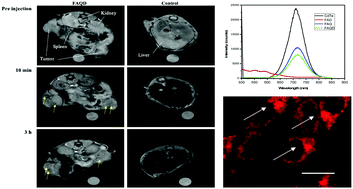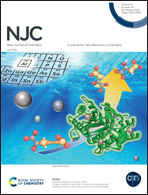Properties and bioeffects of magneto–near infrared nanoparticles on cancer diagnosis and treatment
Abstract
In this study, a multifunctional drug delivery nanosystem Fe3O4–CdTe–alginate (FAQ) was prepared by coating Fe3O4 nanoparticles and CdTe quantum dots (QDs) simultaneously with alginate. High luminescent CdTe QDs can help label the cells for diagnostics while the superparamagnetic Fe3O4 component endows the abilities of hyperthermia and magnetic targeting to the system for cancer treatment. Besides, polymeric alginate provides biocompatibility and high stability (Zeta potential of −49.1 mV) and makes it possible to encapsulate cancer drug Doxorubicin (Dox) in the system. The fluorescence spectra of blank FAQ and FAQ loading Dox (FAQD) were analysed and compared to those of pure CdTe or Dox to confirm the formation of the nanosystems. Next, the samples were applied to in vitro treatment with several human cell lines (Hep-G2, LU-1, RD and Vero cell lines) and showed positive results with low IC50 values for these cells and exhibited higher impact of apoptosis induction and MCF7 spheroid growth delay compared to pure Dox. In particular, FAQ and FAQD have high values of r2 and show contrast increment in the MRI images. The results indicate that FAQ and FAQD can serve as excellent candidates for both cancer therapy and diagnostics.



 Please wait while we load your content...
Please wait while we load your content...